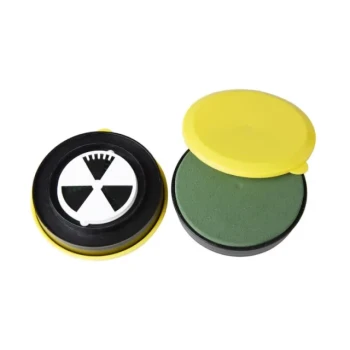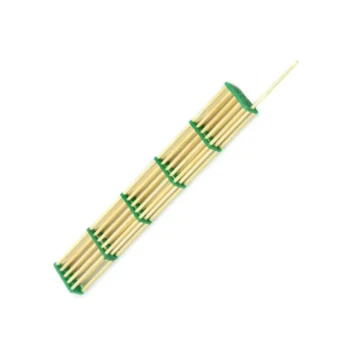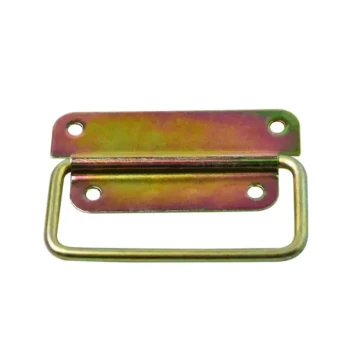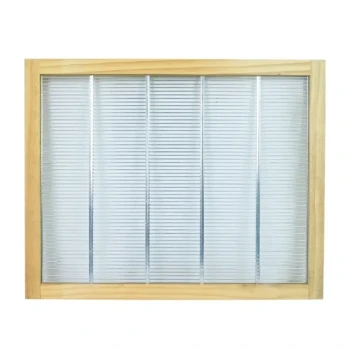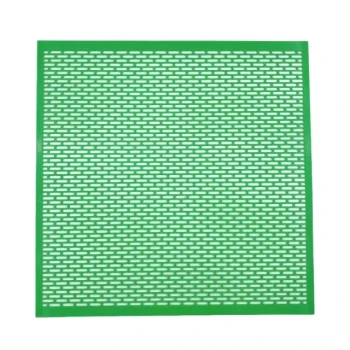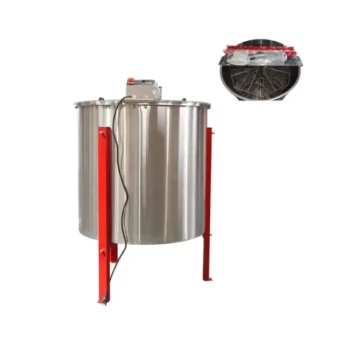To be direct, a high Varroa mite infestation is one of the most significant predictors of winter bee colony death. These external parasites weaken individual bees and, more critically, transmit deadly viruses that cripple the colony's ability to survive the stresses of cold weather. A failure to control mite populations before winter sets in dramatically increases the odds of a dead-out hive by spring.
The core problem is not just the physical presence of mites, but a cascading failure. Varroa mites act as a dual-threat: they directly weaken bees by feeding on them and indirectly decimate the colony by amplifying and spreading viruses like Deformed Wing Virus (DWV).
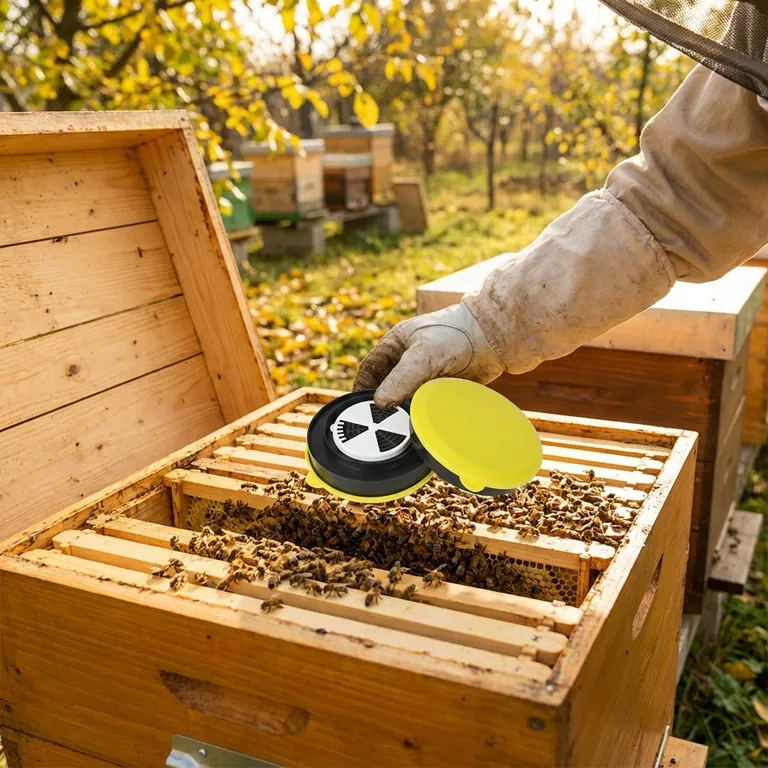
The Direct Threat: How Mites Weaken the Winter Cluster
Varroa mites systematically break down a colony's resilience, making it vulnerable to the ordinary pressures of winter.
Parasitic Feeding on Essential Tissues
Varroa mites feed on the fat bodies of both adult bees and developing brood. These fat bodies are critical organs, functioning like a liver and energy reserve.
For winter bees, healthy fat bodies are essential for storing energy and surviving the long, broodless period when foraging is impossible. Mite feeding depletes these vital reserves.
The Hidden Reproductive Cycle
The mites you see on the backs of adult bees, known as phoretic mites, represent only a fraction of the total infestation.
The majority of the mite population is hidden inside capped brood cells, where female mites undergo multiple reproductive cycles. This is where the mite population grows exponentially, largely unseen by the beekeeper.
Compromising the Winter Bees
The bees that make up the winter cluster are physiologically different from summer bees; they are raised to live for months, not weeks.
When Varroa mites infest the brood cells where these winter bees are developing, the resulting adult bees are born underweight, weakened, and with shorter lifespans, dooming the colony's winter survival strategy.
The Indirect Killer: Virus Transmission
While the direct parasitism is damaging, the viruses that Varroa mites transmit are often the ultimate cause of colony collapse.
Varroa as a Disease Vector
Varroa mites are highly effective vectors for numerous bee viruses. As they feed, they create open wounds and inject viruses directly into the bee's circulatory system (hemolymph).
This method of transmission allows for more virulent strains of viruses to propagate throughout the colony, bypassing the bee's natural defenses.
The Deformed Wing Virus (DWV) Connection
The most well-known of these pathogens is the Deformed Wing Virus (DWV). In the presence of high mite loads, DWV prevalence skyrockets.
Infected bees emerge with shrunken, useless wings and other deformities, unable to perform essential tasks like flying. A colony full of crippled bees cannot function or survive.
The Point of No Return: Varroa Mite Syndrome
Varroa Mite Syndrome (VMS) is the terminal stage of a Varroa infestation. It is characterized by a dwindling population, spotty brood patterns, and sunken, discolored larvae.
By the time VMS is visually apparent, the viral load in the colony is typically overwhelming. Even if visible mite numbers seem low, the colony is often beyond the point of recovery.
Understanding the Pitfalls in Mite Management
Objectively assessing the mite threat is critical, as surface-level observations can be dangerously misleading.
Focusing Only on Visible Mites
Relying on seeing mites on adult bees is an unreliable method for gauging an infestation. The real damage and reproduction are occurring out of sight within the sealed brood.
Systematic monitoring, such as alcohol washes or sticky board counts, is necessary to understand the true level of infestation.
Ignoring Mite Thresholds
Research has established clear action thresholds. For example, a natural mite fall of just 3 mites per day in December is correlated with a higher probability of winter loss.
Ignoring these evidence-based thresholds and waiting for visible signs of decline is a common and often fatal mistake for the colony.
The "Mite Bomb" Effect
Heavily infested colonies that are collapsing can be robbed by bees from stronger, nearby hives.
This process spreads Varroa mites and their associated viruses to otherwise healthy colonies, creating a "mite bomb" that can devastate an entire apiary.
Making the Right Choice for Your Goal
Effective Varroa management is not a reaction to a problem but a proactive strategy to prevent one. The goal is to ensure the bees entering winter are as healthy as possible.
- If your primary focus is winter survival: You must reduce mite populations to very low levels in the late summer and early fall, before the winter bees are raised.
- If your primary focus is long-term colony health: You must implement a year-round integrated pest management plan that includes regular monitoring and timely treatment based on established thresholds.
- If your primary focus is preventing apiary-wide collapse: You must recognize that a single, unmanaged hive can become a source of infestation for all others and manage all colonies accordingly.
Proactively controlling Varroa mites is the single most impactful action a beekeeper can take to ensure colonies survive winter and thrive the following season.
Summary Table:
| Threat Type | Key Impact on Winter Colony | Critical Management Insight |
|---|---|---|
| Direct Parasitism | Weakens bees by depleting fat body reserves, leading to underweight winter bees with shorter lifespans. | Focus on late summer/fall treatment before winter bees are raised. |
| Virus Transmission | Amplifies viruses like Deformed Wing Virus (DWV), causing crippled bees and colony collapse (Varroa Mite Syndrome). | Monitor mite levels systematically; don't wait for visible decline. |
| Hidden Reproduction | Mite population grows exponentially inside capped brood cells, unseen by the beekeeper. | Use alcohol washes or sticky boards to assess true infestation levels. |
Protect Your Apiary and Secure Your Winter Survival
A proactive Varroa mite management plan is your best defense against winter colony losses. HONESTBEE supplies commercial apiaries and beekeeping equipment distributors with the reliable tools and knowledge needed for effective integrated pest management.
We understand the critical thresholds and timing for treatment to ensure your bees enter winter strong and healthy. Let us help you build a resilient beekeeping operation.
Contact HONESTBEE today to discuss wholesale solutions for your mite control strategy.
Visual Guide

Related Products
- Adjustable Formic and Acetic Acid Dispenser for Bee Mite Treatment
- Professional Bamboo Queen Isolation Cage
- Professional Drop-Style Hive Handles for Beekeeping
- Professional Plastic Queen Excluder for Modern Beekeeping
- Wooden Queen Bee Excluder for Beekeeping
People Also Ask
- How can beekeepers ensure their hives survive the winter? A Guide to Colony Survival
- How do Varroa mites spread between honey bee colonies? Stop Mite Transmission in Your Apiary
- What is the focus of hive management during summer? Maximize Your Honey Harvest with Expert Tips
- What is the optimal time for varroa mite control in nucs? Maximize Efficacy with Perfect Timing
- What should beekeepers do to manage varroa mites effectively? Adopt a Proactive Monitoring Strategy
